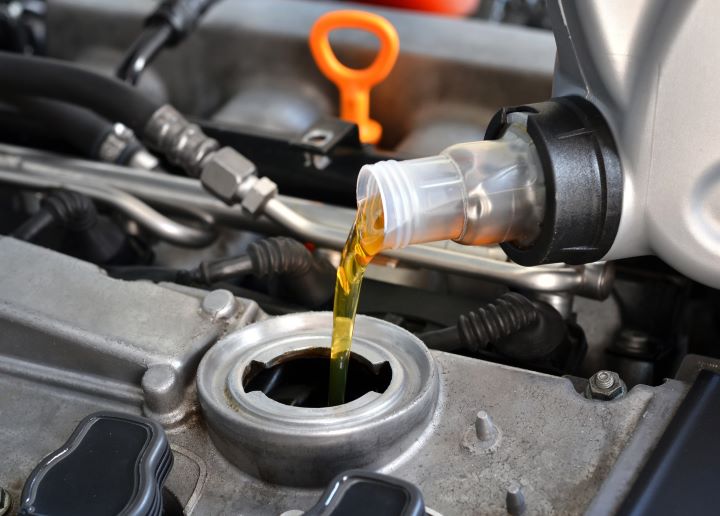Essential Guide to Buying and Maintaining Second Hand Cars
Purchasing a second hand car represents a significant investment that requires careful consideration and thorough evaluation. Understanding what to examine, which features indicate reliability, and how to maintain your vehicle for long-term use can save you thousands of dollars and prevent costly repairs down the road. Whether you're a first-time buyer or experienced car owner, knowing the right approach to evaluating used vehicles ensures you make an informed decision that serves your transportation needs for years to come.

How to Check a Second Hand Car Before Choosing
Before making any purchase decision, conducting a comprehensive inspection is crucial for identifying potential issues that could become expensive problems later. Start with the exterior by examining the paint for rust, dents, or mismatched colors that might indicate accident damage or poor maintenance. Check all lights, including headlights, taillights, turn signals, and hazard lights to ensure they function properly.
Under the hood, inspect fluid levels including oil, coolant, brake fluid, and transmission fluid. Dark, thick oil or low fluid levels may signal neglect or mechanical problems. Listen to the engine while it runs - unusual noises, irregular idling, or excessive vibration can indicate internal issues. Examine belts and hoses for cracks, fraying, or signs of wear that could lead to breakdowns.
Don’t forget to check the tires for even wear patterns, adequate tread depth, and proper inflation. Uneven wear might suggest alignment problems, suspension issues, or poor maintenance habits from the previous owner.
Features to Look for in a Reliable Second Hand Car
Certain characteristics distinguish dependable used vehicles from potential money pits. Focus on cars with complete maintenance records, as documented service history indicates responsible ownership and proper care. Look for vehicles that have had regular oil changes, scheduled maintenance, and any necessary repairs performed by qualified mechanics.
Mileage matters, but age and maintenance history often prove more important than odometer readings alone. A well-maintained vehicle with higher mileage may outlast a neglected car with fewer miles. Consider the vehicle’s reputation for reliability by researching common problems associated with specific makes, models, and years.
Interior condition reflects overall care - clean, well-maintained interiors usually indicate owners who valued their vehicles. Test all electrical components including air conditioning, heating, radio, power windows, and charging ports to ensure everything functions correctly.
Tips for Long-Term Use of a Second Hand Car
Maximizing your used car’s lifespan requires establishing good maintenance habits from day one. Create a maintenance schedule based on manufacturer recommendations and stick to it religiously. Regular oil changes, filter replacements, and fluid checks prevent minor issues from becoming major repairs.
Keep detailed records of all maintenance and repairs, as this documentation helps maintain resale value and assists mechanics in diagnosing future problems. Address small issues promptly before they escalate - unusual noises, warning lights, or changes in performance deserve immediate attention.
Develop relationships with trusted local mechanics who can provide honest assessments and fair pricing. Regular inspections by qualified professionals help identify potential problems early when repairs are typically less expensive and less disruptive.
| Vehicle Category | Average Price Range | Key Considerations |
|---|---|---|
| Compact Cars (3-5 years old) | $12,000 - $18,000 | Good fuel economy, lower maintenance costs |
| Mid-size Sedans (3-5 years old) | $15,000 - $25,000 | Balance of comfort and reliability |
| SUVs (3-5 years old) | $20,000 - $35,000 | Higher maintenance costs, more space |
| Pickup Trucks (3-5 years old) | $18,000 - $40,000 | Work capability, varies by size and features |
Prices, rates, or cost estimates mentioned in this article are based on the latest available information but may change over time. Independent research is advised before making financial decisions.
Smart purchasing decisions extend beyond the initial inspection and purchase price. Factor in ongoing costs including insurance, registration, fuel consumption, and expected maintenance expenses when budgeting for your used car purchase. Research insurance rates for specific models before buying, as some vehicles cost significantly more to insure than others.
Consider purchasing from reputable dealers who offer limited warranties or certified pre-owned programs, though private party sales often provide better value for budget-conscious buyers. Regardless of where you buy, arrange independent inspections by qualified mechanics before finalizing any purchase, especially for older or higher-mileage vehicles.
Understanding financing options helps you secure the best possible terms for your purchase. Credit unions often offer competitive rates for used car loans, while some dealerships provide promotional financing that may benefit qualified buyers. Compare offers from multiple sources and read all terms carefully before signing any agreements.
The used car market offers excellent opportunities for savvy buyers who approach purchases methodically and maintain their vehicles properly. By following systematic inspection procedures, identifying reliable vehicle characteristics, and implementing proper maintenance practices, you can enjoy years of dependable transportation while maximizing your investment value. Remember that patience during the shopping process often leads to better deals and more suitable vehicles for your specific needs and budget.




